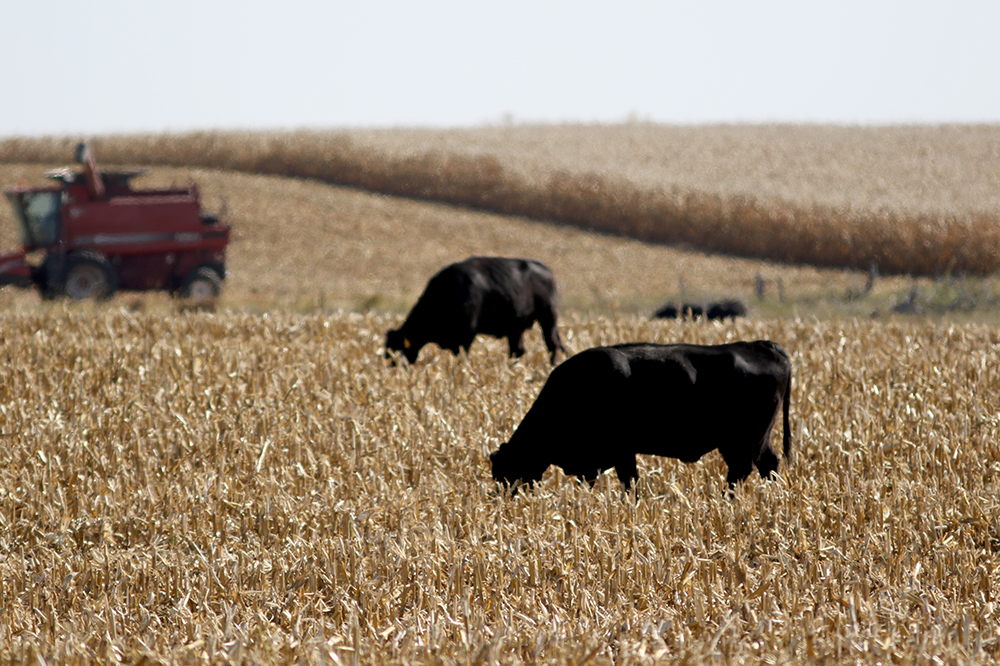
Jared Strong/Iowa Capital Dispatch
This year’s corn and soybean harvests are virtually complete in nearly every area of the state, with one exception: south-central Iowa.
“Farmers in south central Iowa still have over 10 percent of their corn for grain crop remaining to be harvested,” the U.S. Department of Agriculture reported on Monday.
That region of the state is often the last to finish harvest, according to USDA crop reports that date back more than a decade.
This year, part of that lag might have been caused by some replanting of soybeans, which delayed their maturation and harvest, said Clarabell Probasco, an Iowa State University Extension field agronomist who monitors part of that area.
“With those late-planted beans, people just kind of waited around to get out to harvest,” she said.
But the broader issue might be tied to higher yields and limited on-farm grain storage, said Aaron Saeugling, an Extension field agronomist who monitors other counties of that area. South-central Iowa typically has the lowest bushel-per-acre yields of any part of the state, according to ISU data.
“Yields have been higher than we’re used to,” Saeugling said, “and typically we don’t have the grain storage down there that we do in other parts of the state, so a little more of it has to go to town.”
Despite the delays in that area, Iowa’s soybean harvest is considered complete, and about 97% of the state’s corn had been harvested as of Sunday. The work has been aided by a streak of mostly rainless weeks.
Last week, the highest precipitation total was four-hundredths of an inch in the southeast corner of Iowa, State Climatologist Justin Glisan reported. The state averaged zero precipitation for the week, compared with the normally expected 0.43 inches.
That dryness will be “the big story” in the next several months, said Saeugling, who has noted dry wells and dwindling streams that are used for livestock. He thinks the U.S. Drought Monitor has understated that dryness in Cass and Pottawattamie counties, which have been classified as having severe drought, the third-worst drought designation.
“I’ve lived here 23 years, and I’ve never seen the (Nishnabotna) River this low — ever,” he said. “And it’s been this low for five months.”
